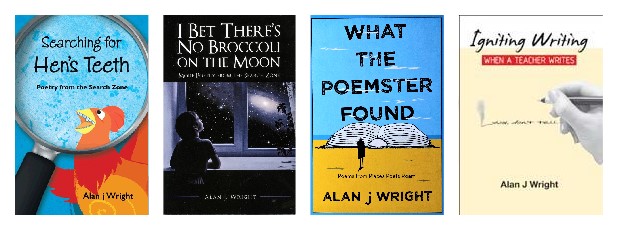These wonderful literary elements are everywhere! While they possess the power to enhance your writing of poetry, It must be noted though that while they can add real power to your writing, they must be used effectively.
They can also read as somewhat ordinary if as writers and poets we use tired and familiar examples. The challenge is to use fresh and original ideas whenever possible. A good rule is to ask yourself, have I heard this before? If the answer is yes, then try to create one that has a more original feel.
Some writers actually collect metaphors and similes using the examples as a way of refining and expanding their relationship with words.
New Zealand writer, Terence Hodgson in his book, Eyes Like Butterflies presents a treasury of similes and metaphors taken from modern English literature. The images collected in his book are arranged by theme and subject. It provides a source of reference and inspiration for writers to add to their word knowledge. Here are a couple of examples:
“A smile like a torch with a weak battery” - Hugo Charteris, The Indian Summer of Gabriel Murray
His hair was that special mad yellow, like an omelette” – Martin Amis, Money.
The following exercises come from Brigid Lowry’s book, Juicy Writing and are well worth trying:
Take notice of metaphors and similes when you read. Keep a list in your writer’s notebook.
Take similes and turn them into metaphors.
Her hair was like a waterfall. -Her waterfall hair streamed down her back.
The day was smooth like silk. -A silk smooth day unfolded.
Make a list of twenty strong nouns such as moon, highway, sneaker, star. Then make a list of adjectives: tired, joyful lost magical. When you have your two lists combine a word from each list to create similes and metaphors.
Some writers actually collect metaphors and similes using the examples as a way of refining and expanding their relationship with words.
New Zealand writer, Terence Hodgson in his book, Eyes Like Butterflies presents a treasury of similes and metaphors taken from modern English literature. The images collected in his book are arranged by theme and subject. It provides a source of reference and inspiration for writers to add to their word knowledge. Here are a couple of examples:
“A smile like a torch with a weak battery” - Hugo Charteris, The Indian Summer of Gabriel Murray
His hair was that special mad yellow, like an omelette” – Martin Amis, Money.
The following exercises come from Brigid Lowry’s book, Juicy Writing and are well worth trying:
Take notice of metaphors and similes when you read. Keep a list in your writer’s notebook.
Take similes and turn them into metaphors.
Her hair was like a waterfall. -Her waterfall hair streamed down her back.
The day was smooth like silk. -A silk smooth day unfolded.
Make a list of twenty strong nouns such as moon, highway, sneaker, star. Then make a list of adjectives: tired, joyful lost magical. When you have your two lists combine a word from each list to create similes and metaphors.
- A fat basketball moon shone down from above.
- His life was blue chaos
- His tongue was a wet highway.
Another way to add variety to description and comparison is to use personification to animate an object and compare its action to something we associate with living things.
The shadows crept closer and closer.
The wind slapped me in the face.
The breeze caressed the daffodils
When poets learn to use these literary elements it adds to the range of writing strategies they can call on to produce words that sparkles with voice and energy.




Comments
Post a Comment